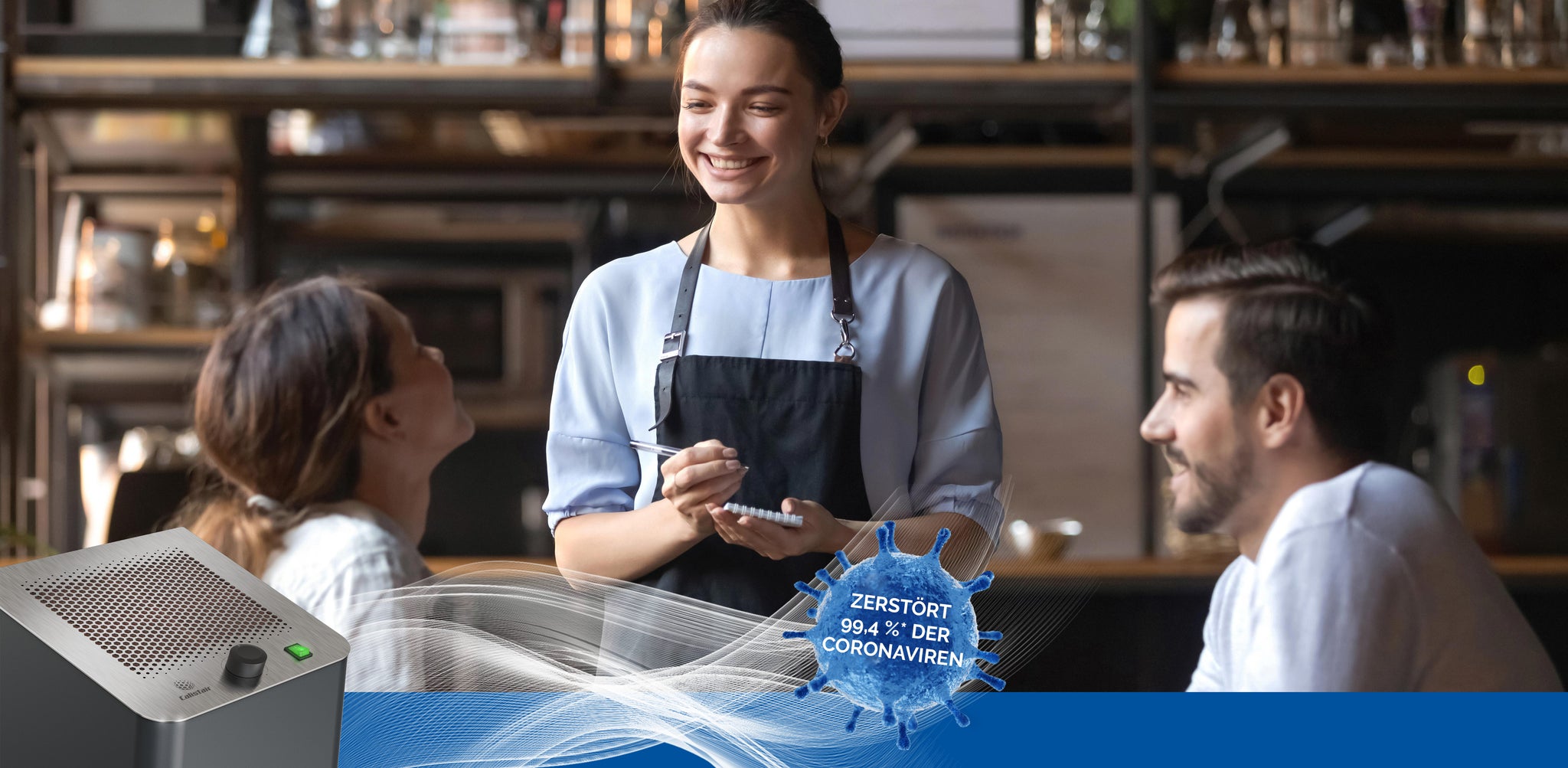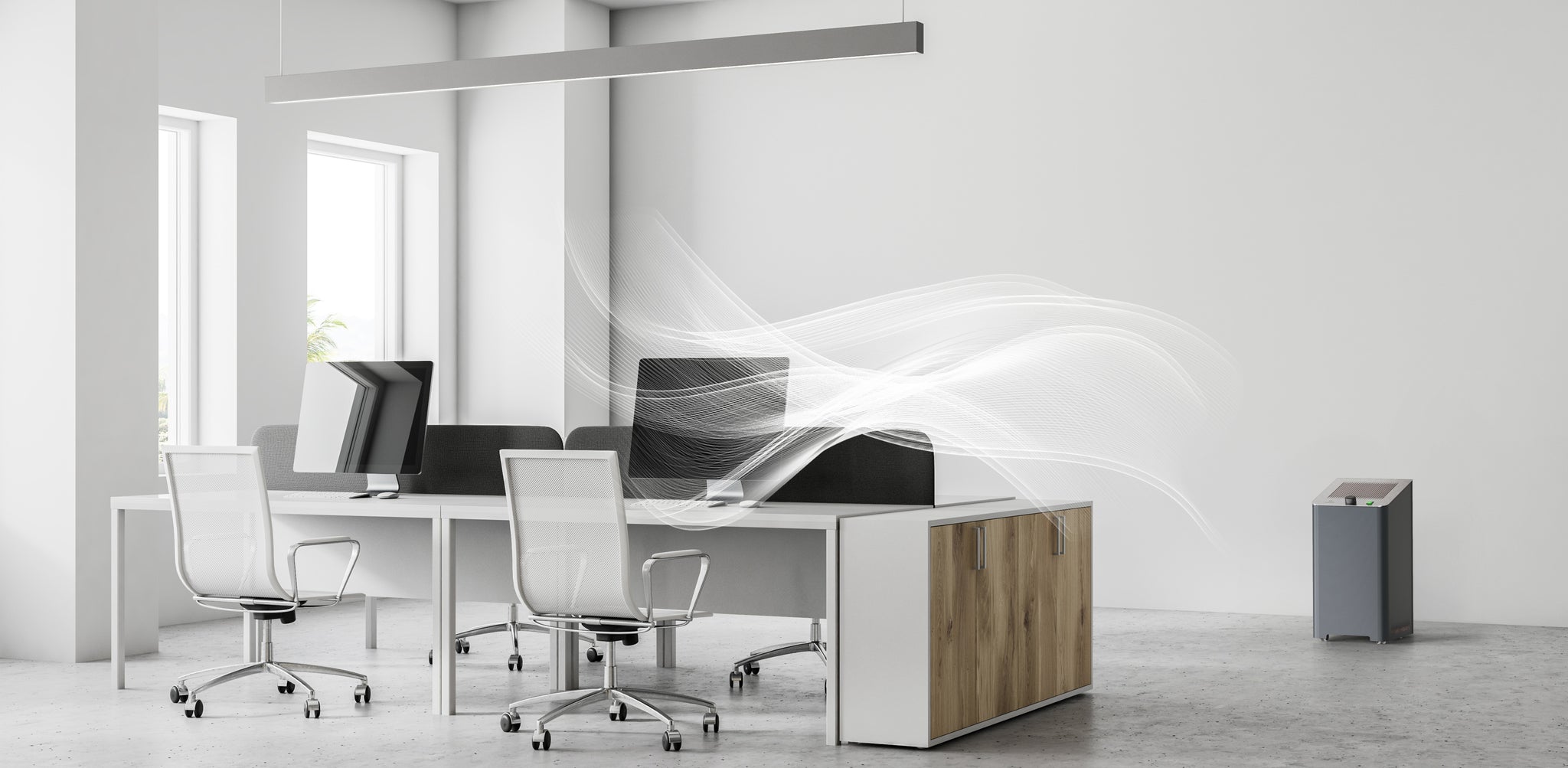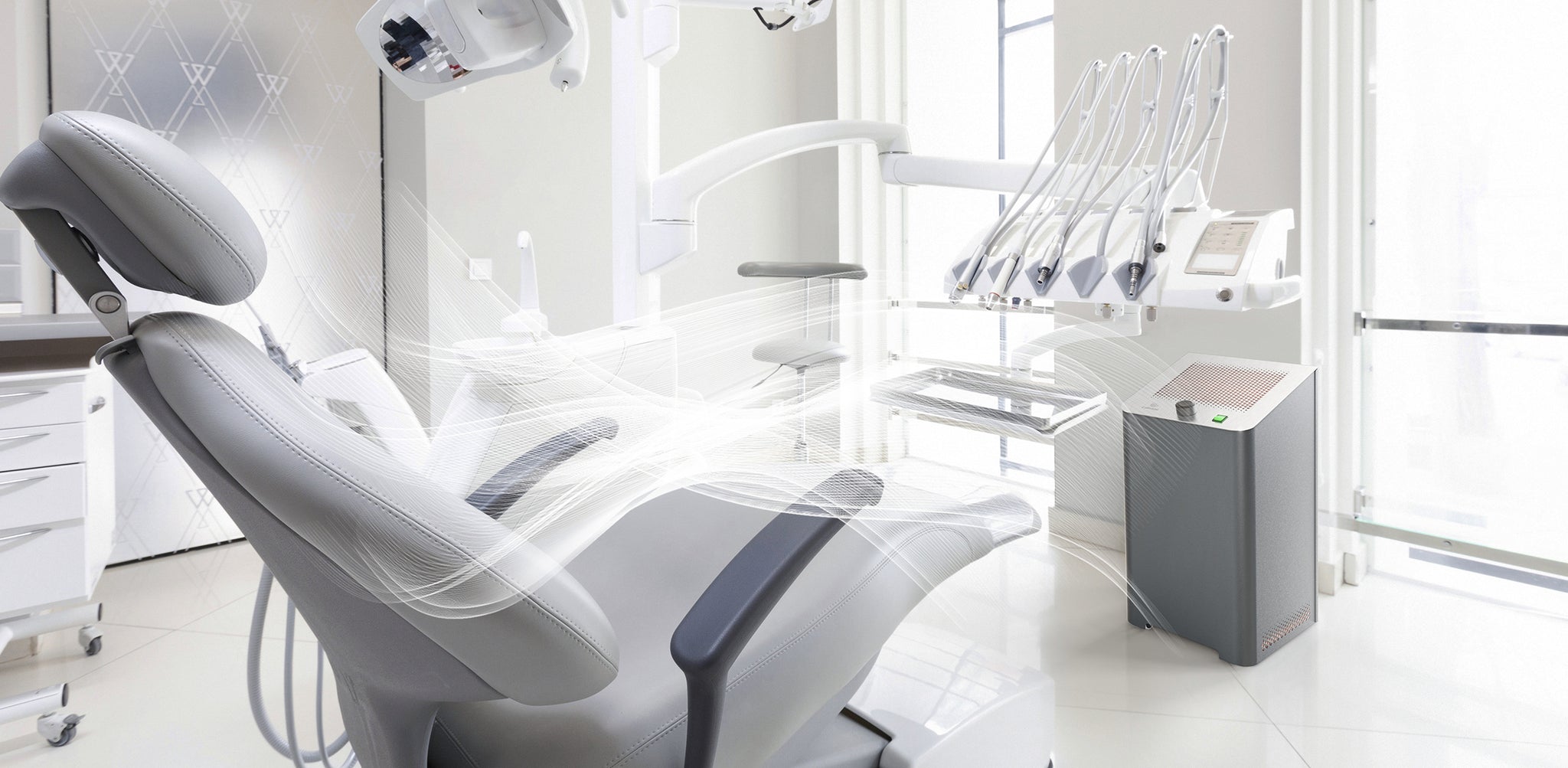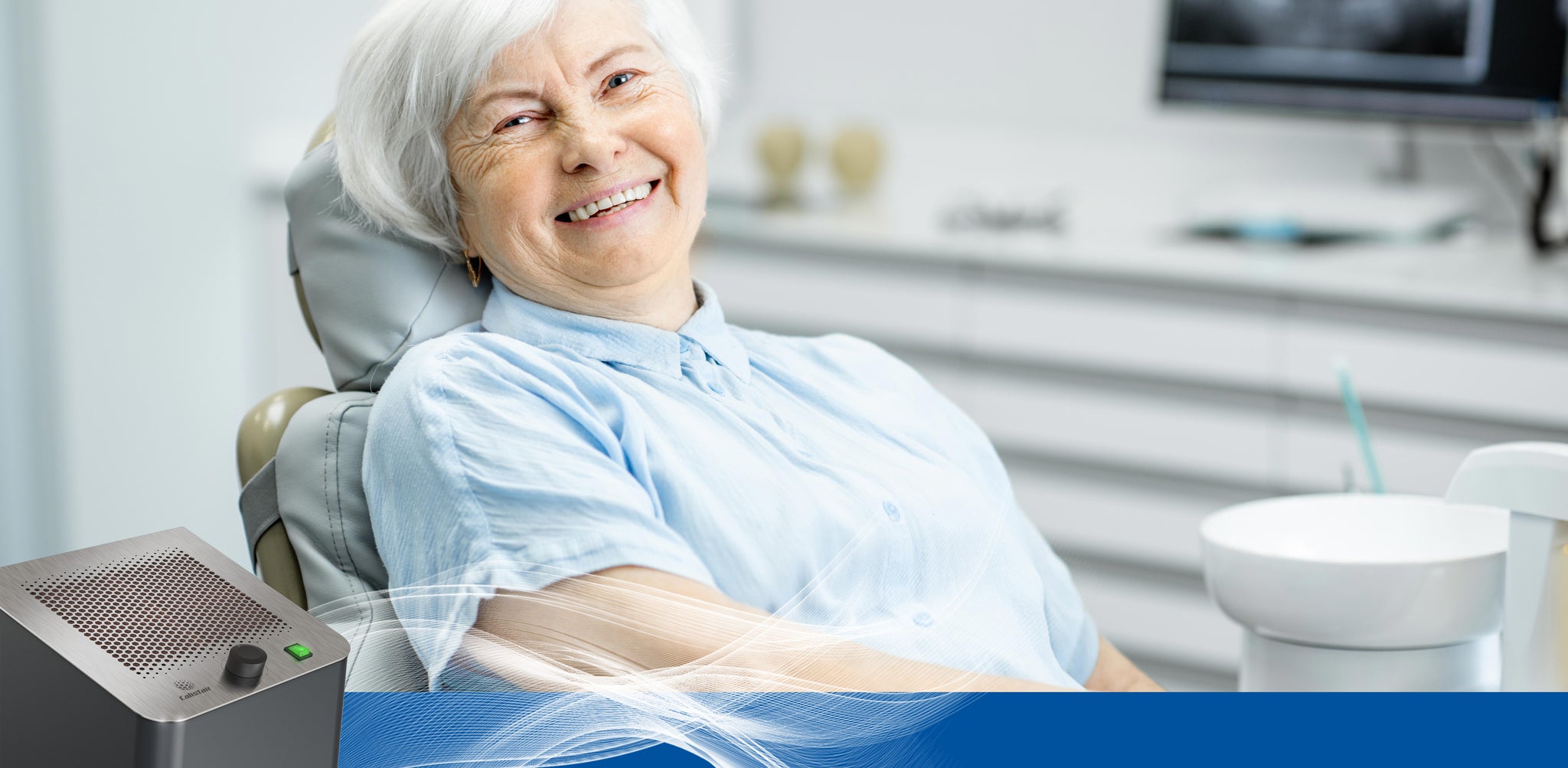✔ Revolutionary destruction technology : destroys viruses, bacteria, fungi and chemical pollutants
✔ Does not need to be operated with an air renewal rate of 6 volumes/h
✔ Safe filter replacement as microorganisms are killed before
✔ Does not use any dangerous chemicals
✔ Does not produce any toxic substances like ozone
✔ Used for many years in hospitals
With the Calistair C300, Corona doesn't stand a chance*
With COVID-19, clean and healthy air is more important than ever! Choose the innovative Calistair Technology now and enjoy the benefits of a personal decontamination system. Calistair Technology has a long history of successful use in many hospitals and has firmly established itself in this environment.
With the Calistair C300 you too can eliminate almost all air contaminants - including COVID-19*. Whether it's a medical practice, legal office, corporate or private premises: The Calistair C300 keeps corona and other viruses out*.
Another advantage: Bacteria, fungi, allergens along with volatile and organic compounds in gaseous form are also effectively eliminated from indoor air. What makes the Calistair C300 so special: It has been demonstrated to eliminate all types of micro-organisms at pre-filtering. Further positive feature: a pleasant smell in the room. Even today, leading hospitals and laboratories rely on Calistair Technology to provide highly efficient solutions for air purification and personal protection. Whether it's a surgery unit, COVID-19 ward, patient room or neonatal care.
In contrast to conventional air purifiers, the underlying technology of the Calistair C300 is based on that of a professional decontamination unit and ensures effective disintegration of the captured contaminant particles within minutes. This is confirmed by tests conducted by a prestigious institute: In fact, the Calistair C300 fully complies with Class 2 of the stringent French standard for clean air in healthcare facilities (NF S90-351) when operating in a 40m³* room.
Standards and regulations - The legislative requirements
The HEPA filters are manufactured based on different standards and regulations, depending on their place of use. Customarily, the dependent variable is the air, which is analysed in a certain context, from which the requirements for the particle cleanliness class are derived. The maximum permissible number of airborne particles on a certain surface is classified. The experts categorise a total of nine ISO classes.
In hospitals, air quality of ISO classes 5 to 8 is recommended - depending on the area. For example, the international standard for air quality, ISO 14644, prescribes an ISO class 5 for operating theatres for orthopaedic surgery and neurosurgery.
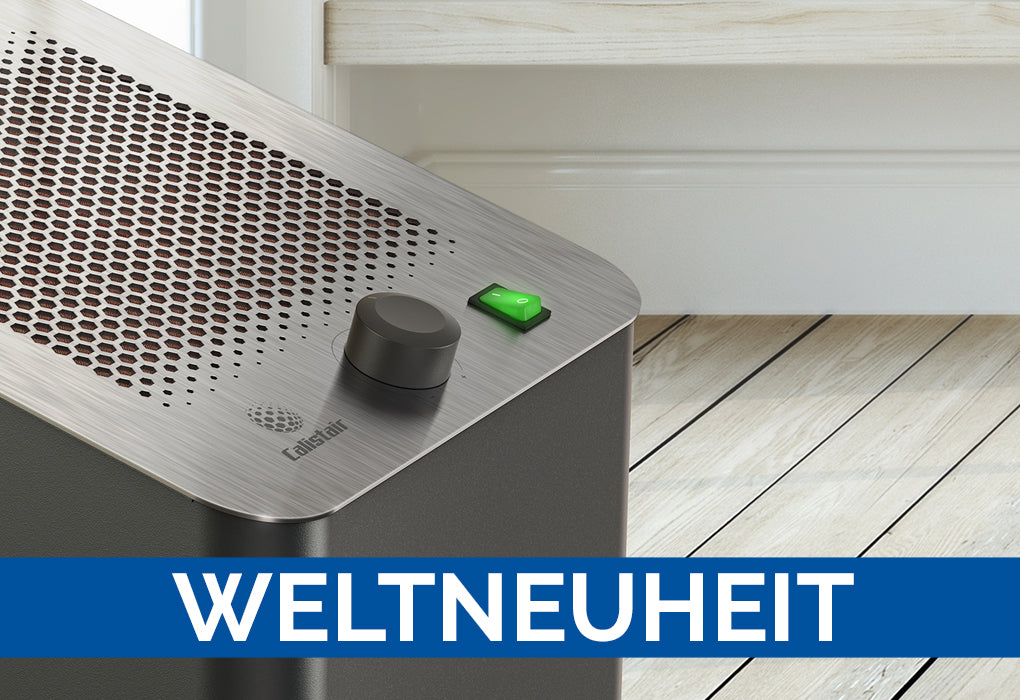
We eliminate 99.4 %* of all airborne corona viruses in just a few minutes
Independent tests conducted by the most prestigious French microbiological laboratory demonstrate: Even just a small test device - equipped with the technology of the Calistair C300 - after only 10 minutes of operation attains elimination efficiency of 99.4% against corona viruses* released into the air of the test environment. This makes Calistair an unmatched technology that goes beyond the limits of traditional HEPA filters - especially when it comes to particle sizes below 0.3 microns. Furthermore: The Calistair C300 also efficiently removes from the indoor air traditionally dreaded bacteria and fungi, not to mention allergens, volatile organic compounds (VOC), gases and odours. Preventive healthcare for your premises has never been easier!
Here is what you need to know about HEPA filters:
The abbreviation HEPA denotes High Efficiency Particulate Air, which is nothing but air filters with an extremely high effectiveness against particles larger than 0.3 micrometres. The usual filter-based devices for air disinfection make use of three effects in room air disinfection: the so-called barrier effect, the inertial effect and the diffusion effect. A HEPA filter consists of a close-meshed network of fibres, which are deliberately arranged in a random fashion - in other words, there are always different spaces between the fibres of the filter for disinfecting the room air, i.e. there are always different large or small spaces. The air flying by is filtered, which can contain an infinite number of particles, germs, dust, allergens, etc.
The particles move with the air flow around the fibres, which are the most essential part of such a filter for disinfecting the air in the room. If they get too close to a fibre, they stick to it. Since larger particles have a greater mass and are therefore carriers, they do not have a problem with a change in the air flow in the HEPA filter - they continue to move unaltered. However, at some point, large particles such as bacteria, allergens, etc. collide with the nearest fibre and stay attached. It works a little differently with the miniscule particles: Owing to their size, they are moved by the collision with other gas molecules. Since such collisions are virtually of a permanent nature in a filter, viruses and bacteria are permanently deflected and do not get caught in the fibre network.
Incidentally, the Calistair C300 also effectively removes previously formidable bacteria and fungi and, last but not least, allergens, volatile organic compounds (VOC), gases and odours from indoor air, thus functioning as a powerful indoor air disinfectant. Indoor hygiene has never been easier!
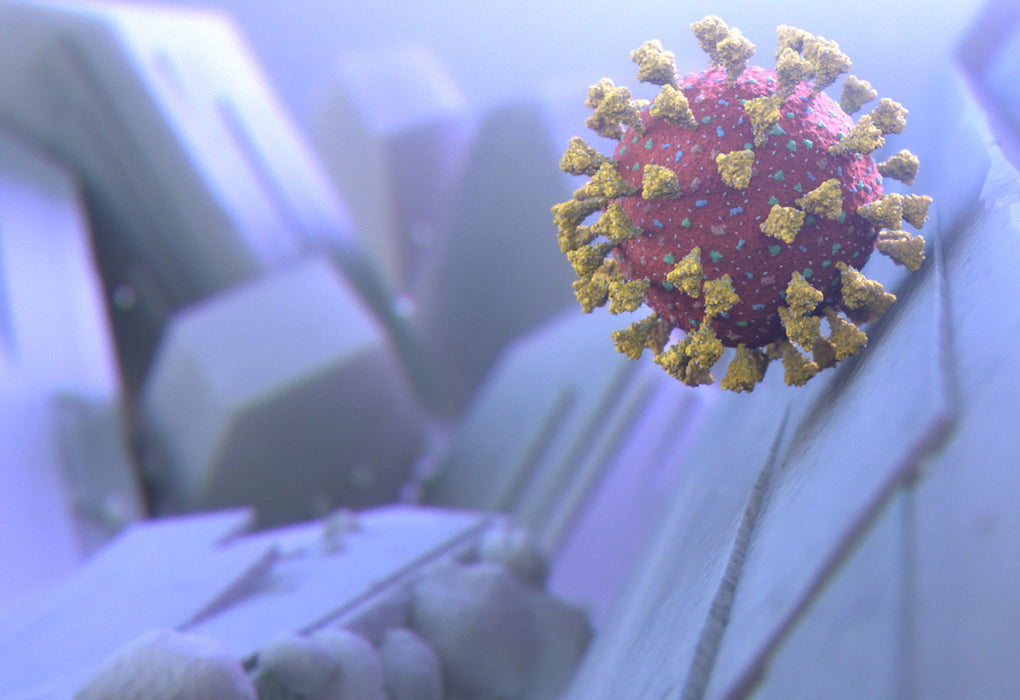
Safe filter replacement - how it works
Although HEPA filters have now firmly established themselves as the standard technology in the air purification industry, their capabilities are limited when dealing with particles smaller than 0.3 microns. This means they cannot always reliably eliminate viruses such as SARS-CoV-2 as well as most other forms of corona viruses from the ambient air. If microcontaminants (viruses, bacteria, fungi and fungal spores) remain trapped in the filter, they often survive there from a few hours to several weeks - which increases the risk during filter replacement. Another problem is that microorganisms, when decomposing or multiplying inside filters, produce highly pathogenic toxins. These are endotoxins, mycotoxins or volatile organic compounds (VOCs), that can cause severe health complications and, in the worst scenario, can lead to death for exposed people. Calistair Technology solves this problem: Trapped microorganisms are effectively destroyed at the stage of prefiltering.
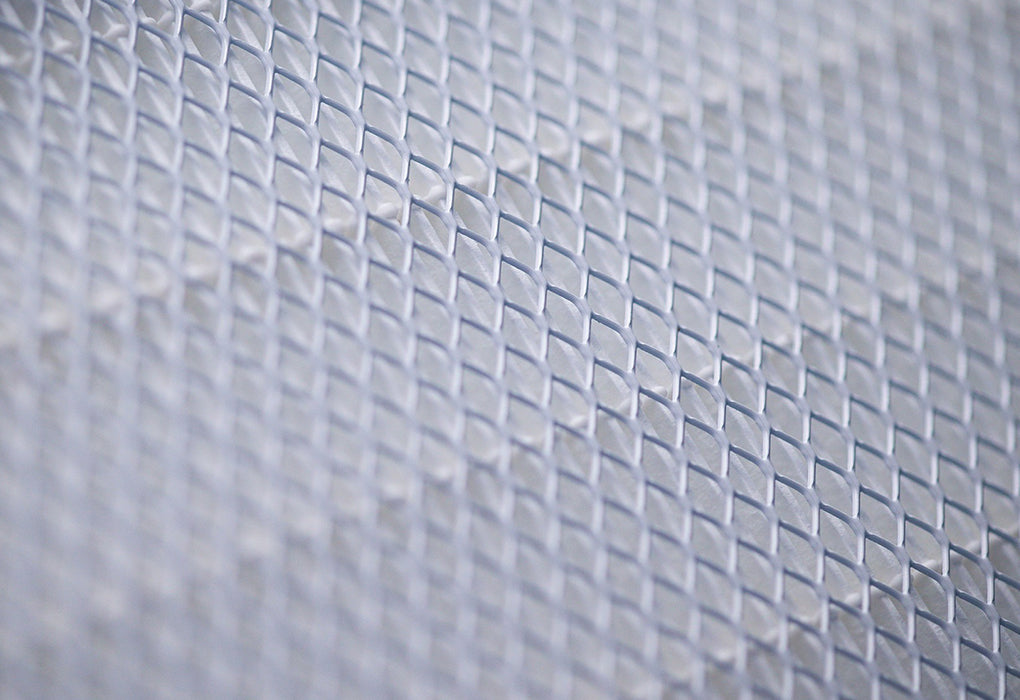
Our vision - From providing clean air for operating rooms towards a technology to serve everyone
Air - a fascinating element. It is all around us and is a vital element. A closer look shows how complex air actually is. Studying air as an element in depth presents us with a world of infinitely small particles - a world that we can only sense, but not see. It is full of curious creatures as well as sinister inhabitants and dangers. And it is also the home of genuine beauty. I founded Calistair because I would like to understand this world better. Calistair strives to create the most advanced and protective air decontamination technology.
Jérôme Taranto (founder of Calistair)
How does Calistair Technology work?
Examples of practical application
The Calistair C300. Ideal for rooms up to 60 m².

Please contact us if you need any further information
Monday to Friday
9:00 to 17:00
✆ Tel.: +49 (69)90750862
✉ contact@calistair.com

*The institute that carried out the tests confirmed that the technology invented by Calistair destroys more than 99.4% of human airborne coronavirus of the HCoV-229E type within 10 minutes. The tests used a miniaturised prototype in a microbiological safety container with a volume of 0.54 m3. No other aids like filters were used, instead just the Calistair Technology. The coronavirus HCoV-229E is a coronavirus of the same family as SARS-CoV-2, the virus responsible for the COVID-19 disease.


